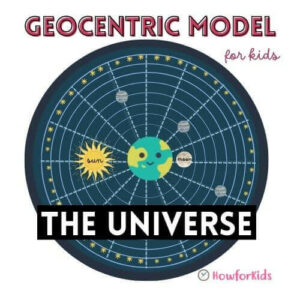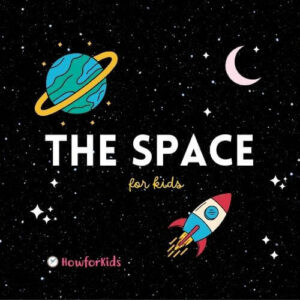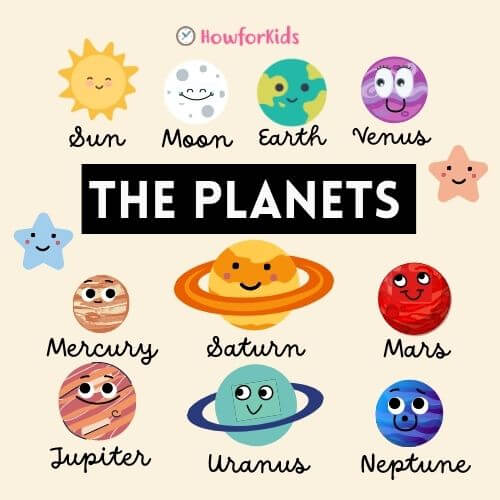The universe is everything, without exceptions. Matter, energy, space and time, everything that exists is part of the Universe. It is sometimes also called Cosmos. So let’s dive deep into and answer: What is the universe?
Astronomy for Kids
Table of Contents
The sciences that study the universe are several, but mainly these two: astronomy and cosmology.
It is generally believed that the universe is everything that exists, has existed, and will exist. This definition tells us that the universe is made of two things: on the one hand, space and time, known together as space-time; and on the other hand, matter and the different forms of energy that occupy space-time.
The Universe Explained
The universe contains billions of galaxies and each of these galaxies contains millions or billions of stars. The space between stars and galaxies is largely empty. However, even the farthest reaches of stars and planets contain scattered particles of dust or a few hydrogen atoms.
Space is also full of radiation (for example, light and heat), magnetic fields, and energy particles (for example, cosmic rays). The universe is incredibly large. A modern fighter plane would take more than a million years to reach the closest star to the solar system. It would take 100,000 years to cross our galaxy, the Milky Way, traveling at the speed of light (300,000 km/second).
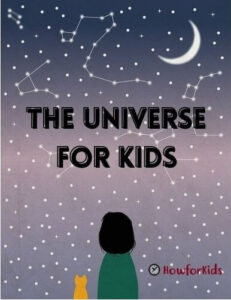
How big is the Universe?
No one knows for sure how big the universe is. It could be infinitely large. Scientists, however, measure the size of the universe by what they can see. They call it the “observable universe.”
All we know about the extent of the universe that we can see is that it would take us at least 93 billion light-years to cross it. (A light year is the distance that light travels in one year, about 9 billion kilometers.)
The Observable Universe for kids
Even with the most advanced technology, we can only see a small part of the universe. The observable universe it is the part of the Cosmos whose light has had time to reach us.
The observable universe is shaped like a sphere, with the Earth at its center. So we can see the same distance in all directions.
Read also: The Phases of the Moon for Kids
The universe has not always been the same size. Scientists believe that it began with the Big Bang, which took place almost 14 billion years ago. Since then, the universe has been expanding at a rapid rate. The area of space that we now see is a billion times larger than it was when the universe was very young. Galaxies also move and the space between them expands.

Edwin Hubble and The Expanding Universe
One of the most interesting things about the universe is that it grows all the time. It is in continuous expansion.
Edwin Powell Hubble was born in Marshfield, Missouri, on November 20, 1889 and died in San Marino, California, on September 28, 1953. He was an astronomer and cosmologist who became famous for discovering that the universe is expanding, and estimating its size and age.
Not only is it getting bigger, but the edge of the universe is expanding faster and faster. Scientists believe that the edge of the universe is expanding faster than the speed of light.
Astronomers can use telescopes to look at very distant galaxies. So you see what the universe looked like millions of years ago. This is because light from distant parts of the universe takes a long time to reach us. If you point a very powerful telescope at a galaxy a million light-years away today, what you will actually see is what that galaxy looked like a million years ago!
Read also: The Solar System for kids
What is the Universe made of?
Although the planet Earth seems very big to us, it is actually a very small part of the universe. The Sun has a mass 330,000 times the size of the Earth. The Sun is just one star in the Milky Way which contains more than 300 billion stars. And scientists estimate that there are more than 170 billion galaxies in the universe!
However, most of the universe is what we think of as empty space. If we put all the stars together, they only make up half of the entire universe. Most of the universe consists of something scientists call dark matter and dark energy.
What are Dark Matter and Dark Energy?
Above we mentioned that most of the universe is made up of dark matter and dark energy, but what exactly are these things?
The Dark Matter
Scientists aren’t exactly sure what dark matter is, but they think it exists because of experiments that prove it. Dark matter is so named because it cannot be seen with any kind of instrument we have today. About 27% of the universe is made up of dark matter.
The Dark Energy
Dark energy is something that scientists believe fills space. It seems that the “empty space” is something else, it is actually this dark energy. The dark energy theory helps scientists explain why the universe is expanding. About 68% of the universe is dark energy.
How old is the Universe? The Age of the Universe
Scientists believe that the universe began 13 to 14 billion years ago with the massive explosion called the Big Bang.
How many Stars are There in the Universe? Counting the Stars
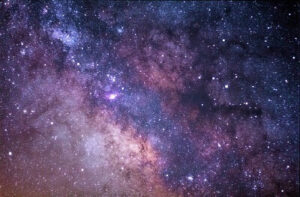
There are about 10 billion galaxies in the observable universe. The number of stars in a galaxy varies, but assuming an average of 100 billion stars per galaxy means there are about 1,000,000,000,000,000,000,000 (that’s a billion trillion) stars in the observable universe.
What is the Big Bang Theory?
Most astronomers believe that the universe began with the Big Bang about 14 billion years ago. At that time, the entire Universe was inside a bubble that was a thousand times smaller than a pin. It was very hot and had a lot of density.
The big bang theory is how astronomers explain how the universe began. It’s the idea that the universe started out as a single point, then stretched to grow as large as it is now, and is still expanding!
How did the Universe Begin
And suddenly it exploded. The universe we know was born. Time, space and matter began with the Big Bang. In a fraction of a second, the universe went from being as small as an atom to as large as a galaxy. And it continued to grow at a fantastic rate. It is still expanding.
As the universe expanded and cooled, energy was converted into particles of matter and antimatter. These two opposing types of particles shattered each other. But some matter survived. The most stable particles called protons and neutrons began to form when the universe was one second old.
Over the next three minutes, the temperature dropped below a billion degrees Celsius. It was now cold enough for protons and neutrons to coalesce into the nuclei of hydrogen and helium.
After 300,000 years, the universe had cooled by about 3,000 degrees. The atomic nucleus could finally capture electrons to form atoms. The universe was filled with clouds of hydrogen and helium gas.
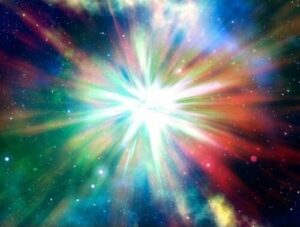
Big Bang: How the Universe was created
We cannot see anything that happened during the first 300,000 years of the universe. Scientists try to find a solution with their knowledge of atomic particles and with computer models.
The only direct evidence of the Big Bang is a faint glow in space. Spacecraft and telescopes see this as an irregular pattern of slightly hotter and slightly cooler gas around us. These waves also show where the hydrogen clouds were slightly denser.
When millions of years passed, the dense areas stopped the matter because they had more gravity. Finally, about 100 million years after the Big Bang, the gas heated up and became dense enough for the first stars to form.
New stars began to be born at a rate 10 times faster than they do in the universe today. The large groups of stars soon became the first galaxies.
Hubble Telescope
The Hubble Telescope and other large ground-based telescopes are beginning to find galaxies that were created about a billion years after the Big Bang. These small galaxies were much closer together than today’s galaxies. Collisions were frequent. Like two flames approaching each other, they became larger galaxies. Our galaxy, the Milky Way, was formed in this way.
Black Holes in Space. What are Black Holes?
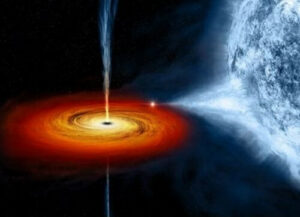
Black holes are the rarest objects in the universe. A black hole does not have a surface like a planet or a star. Rather, it is a region of space where matter has collapsed in on itself. This catastrophic collision results in a huge amount of mass concentrated in an incredibly small area. The gravitational pull of this region is so great that nothing can escape – not even light.
Although black holes cannot be seen, we know they exist because of the way they affect surrounding dust, galaxies, and stars. Many of them are surrounded by discs of material. As the disks swirl around each other like a tornado, they become very hot and give off X-rays.
Types of Black Holes
Black holes can be of different sizes. Many are only slightly larger than the Sun. These “stellar-mass” black holes form when a very heavy star, about 10 times heavier than the Sun, ends its life in a supernova explosion. What remains of the star, still solar mass, falls within a few kilometers.
Most galaxies, including the Milky Way, have huge black holes at their centers. These can be millions of times heavier than the sun. Large black holes also power active galaxies and ancient galaxies known as quasars. Quasars can be hundreds of times brighter than even the largest ordinary galaxies, they are considered the brightest objects in the universe.
Objects falling into black holes are literally stretched until they break. If an astronaut got too close and was sucked into a black hole, he would be ripped apart by the super gravitational force.
What is the Milky Way? What is a Galaxy?
The Milky Way is known as the galaxy where our Solar System and our planet are located.
A galaxy is a huge group of stars grouped together in space. The Milky Way contains hundreds of billions of stars like our sun. The Earth is halfway between the center of the Milky Way and its outer edge.
It is located in a cluster of about forty different galaxies called the Local cluster, along with other renowned galaxies such as Andromeda.
The Milky Way is visible to the naked eye from our planet, as a band of white and blurry light that is found throughout the celestial sphere.
It is brightest toward its center, in the direction of the constellation Sagittarius. In the 17th century, Galileo Galilei was the first to observe it with a telescope and realize that it was made up of a cluster of stars that gave it the shape of a nebula. However, it would be Edwin Hubble in the 20th century who delimited it and studied it in greater depth.
The Planets for Kindergarten
Fun Facts about the Universe
- Galaxies are constantly moving further and further away as the universe expands.
- There is no center in the universe. Every galaxy in the universe is separated from every other galaxy.
- The rain on Venus is composed of sulfuric acid which is so corrosive, it would severely burn our skin
- Albert Einstein said that the shape of the universe was open, closed, or flat. Many scientists today think that the universe is flat.
- The universe seems to be getting colder and could even freeze.
- Every hour, the universe expands about a billion kilometers in all directions.
- The Andromeda galaxy can be seen with the naked eye despite being 2 million light years away.
- According to astronomers’ estimates, about 275 million new stars are born every day.
- In 1977, NASA received a signal from outer space that lasted 72 seconds. It is not yet known what it was.
- The most abundant element in the universe is hydrogen. The second most abundant element is helium.
- Some people think that there is more than one universe. They believe that there is a set of universes called the multiverse. By definition, there is no way that something in one universe can affect another. The multiverse is not yet a scientific idea because there is no way to prove it. An idea that cannot be tested is not really science.
